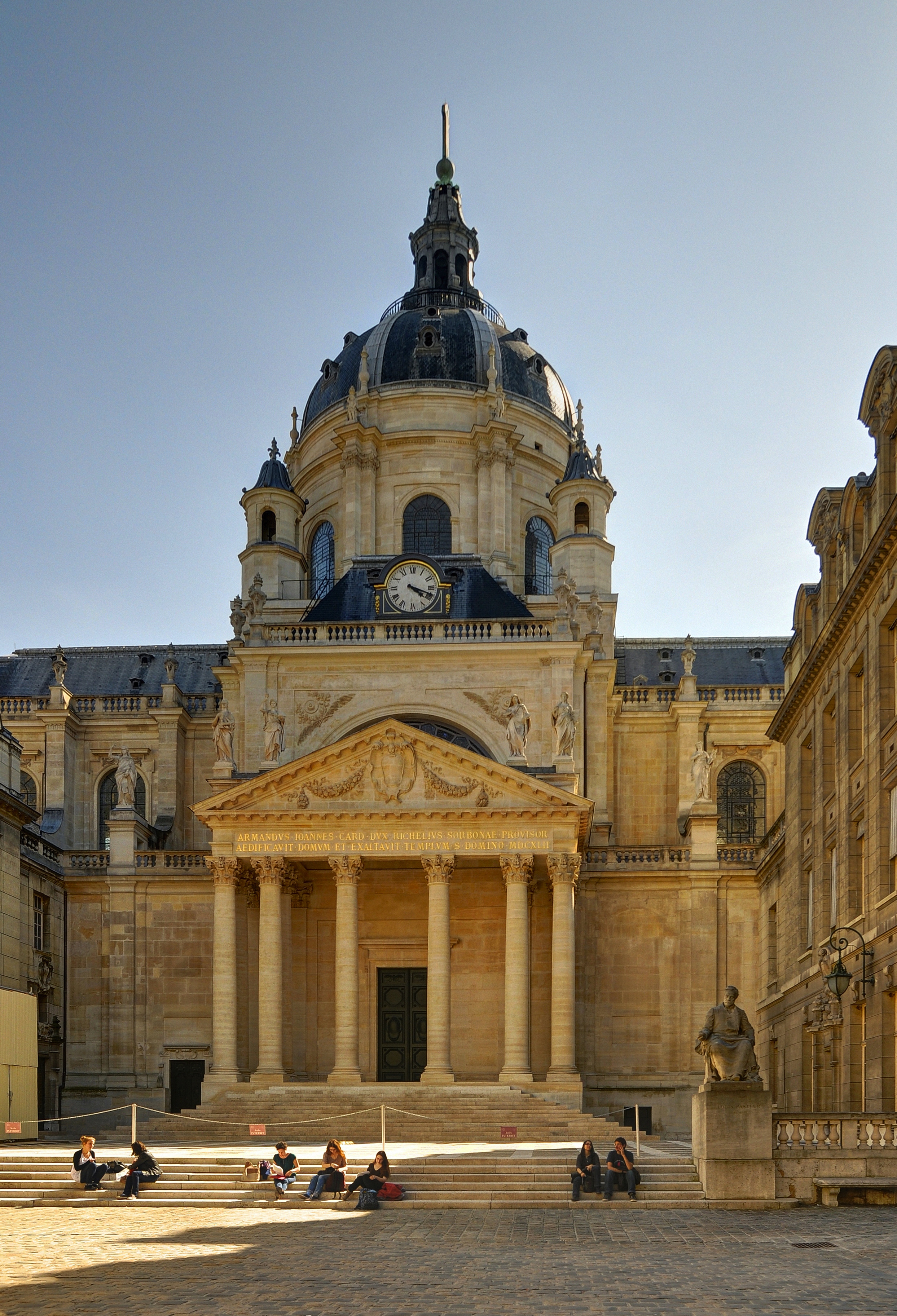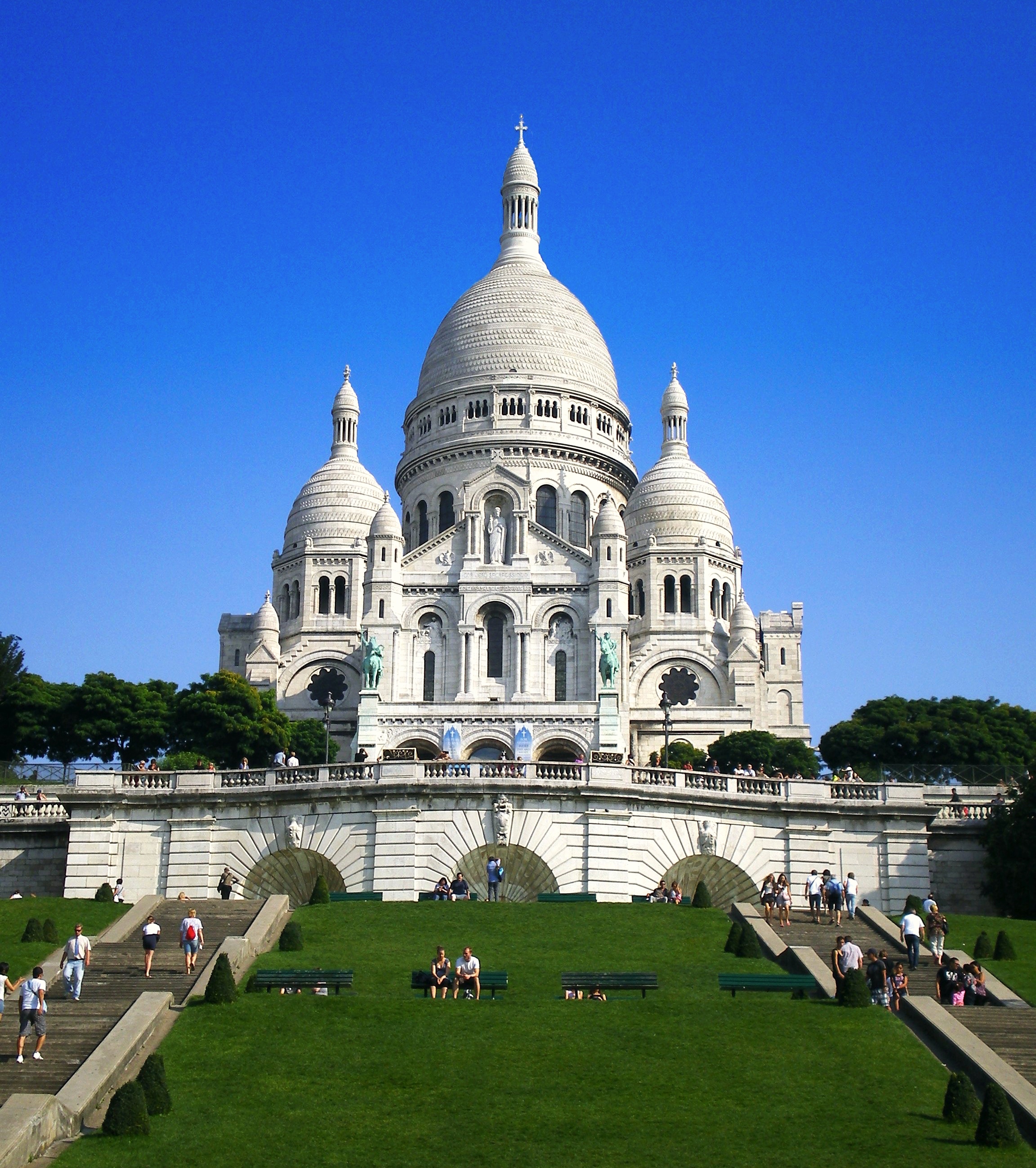Cité des Dômes et du Design (EN).
Published 20 April 2025 at Yours, Kewbish. 1,706 words. Subscribe via RSS.
Introduction
This post was originally written in French and has been translated back to English with slight edits, so doesn’t quite flow as naturally as my other writing.
I’m currently in Paris, doing an internship at Sorbonne Université. Since I landed the internship, I’ve been really looking forward to settling into a new country and research environment, and I’d wanted to improve my French. Fun fact: I’m minoring in French at UBC, so I’m supposed to be able to speak more or less fluidly (spoiler alert: I can’t.)
I didn’t know anyone when I arrived in Paris. I’ve always been an independent type of person, so I made the most of moments alone in new places and museums. I spent many weekends flâneuring around the city. I’m from Vancouver, where there aren’t many old buildings, so I was always astonished by what I saw. For example, the library where I occasionally worked was older than Canada — this was crazy to me! I walked all around, and I found magnificent architecture: sculptures above doors, Corinthian columns, and the most interesting of all, domes.
I explored by looking at the horizon and looking for interesting spires. I learned to find my way around by the domes and other landmarks of Paris. If I saw a gold spire, I would know that it was the dome of the Hôtel des Invalides. If I knew that I was around the 5th arrondissement, I would know that I was close to the Panthéon. It was a bit of a game: which historic places could I identify?
But, listen, when one is in the middle of tens of domes, they start to all look alike. I wanted a checklist: if there was gold, it’d be the Invalides; if the dome was straight and small and beside the Seine, it’d be the Institut de France, and so on. I looked for such a list, and was surprised to find this one on Wikipedia (ironically only available in English, but it was just a list of French names). It was rather funny that someone’d taken the time to write it up, but it was still insufficient to efficiently identify domes. So, I decided to write this post to describe them and share a bit of the stories that I’d learned during my stay here.
About the title of this post: I noticed that in Paris, there’re many programs and buildings that are named like « Cité de … ». There’s the website Cité des métiers, and I used to pass the Cité de la Mode et du Design in the bus every day. According to ChatGPT, this is because « cité » indicates the idea of a central space specialized in something — I don’t entirely believe it, but it might make some sense. In short, I decided to call this post « Cité des Dômes et du Design » as a little nod, because Paris really is a city specialized in magnificent domes.
Panthéon
I think the Pantheon is the most well-known dome — it’s in the 5th arrondissement, close to the Jardin du Luxembourg. It’s where we’ve buried the great men and women of France, like Victor Hugo, Voltaire, and Marie Curie. It’s very big, so it’s easy to see and a good landmark to make your way around in Paris.
Figure 1. Panthéon (Moonik, CC BY-SA 3.0, via Wikimedia Commons)
The Panthéon was built by Louis XV, who had sworn that he would renovate the church formerly on those grounds if he survived a serious illness. He recovered, so he charged Soufflot with architecting a new church. The Panthéon was first a church, then during the Revolution, a secular space where mass no longer took place, then again an active church, and is finally a secular space to bury important folks. It’s dedicated to Saint Geneviève (the library facing the Panthéon is also named after her) and the walls are painted with works depicting her life, from her pious childhood to her death. There’s also a series of paintings dedicated to Joan of Arc and several others for other saints.
I’d recommend taking the time to lift your gaze and get lost in the decoration of the roof. It’s full of details and paintings: my favourite are those under the main dome where the pendulum is, above the sculptures of the virtues.
To identify the Panthéon’s dome, look for a white dome with a second cupola above. Just the colour would be enough to find it, since I think it’s the only big dome in Paris that’s white.
If you’re looking for a croissant close by the Panthéon, I’d recommend going to La Maison d’Isabelle. A friend recommended it and I found that it really does live up to expectations. Their croissants are the crunchiest and crackliest, if that’s the type of croissants you prefer.
Hôtel des Invalides
There are two (possibly more) gold domes in Paris, but the biggest is that of the Hôtel des Invalides, the former hospital for the injured veterans and today a museum complex. Napoleon I is buried under the dome, in a coffin with six layers of wood, lead, and stone. There are four other large coffins under the dome, and its chapels are magnificent. The dome itself is lit up at night, and one can see it just as well as the Eiffel Tower from the Jardin du Trocadéro.

Figure 2. Cathédrale Saint-Louis-des-Invalides (Daniel Vorndran / DXR, CC BY-SA 3.0, via Wikimedia Commons)
In the buildings around the dome, there’s the Museum of the Order of the Liberation, displaying artifacts from the Second World War; an exposition on Charles de Gaulle; and many other collections. The gardens are rather nice as well.
The dome is easy to find, because it’s really gold. The cupola looks like a crown, and the golden spire is rather large. It’s another good landmark, like the Panthéon.
Sorbonne Université
The dome is in the main campus of the Sorbonne University, close to the Panthéon. I don’t think one can normally enter the campus if not enrolled in the university, especially on weekends, because there’s security guards at the entrance checking student cards. Otherwise, the best view of the dome outside of the campus is from the little plaza facing the entrance, where the Statue August Comte is.

Figure 3. Chapelle Sainte-Ursule de la Sorbonne (Moonik, CC BY-SA 3.0, via Wikimedia Commons)
The dome is primarily dark blue, but has white stripes. It’s smaller than the other domes, so it’s a bit difficult to see it, because the other surrounding buildings are about the same height.
Institut de France
The dome of the Institute of France is directly facing the Pont des Arts and the Louvre. It houses the famous grand academies, like the Académie Française that manages the formal rules of the French language.

Figure 4. Institut France (Benh LIEU SONG, CC BY-SA 3.0, via Wikimedia Commons)
In the institute, there’s also the Bibliothèque Mazarine, which is really marvellous. It’s entirely free to enter and the vibes are very somber and academic. It’s not really dark and definitely not light academia, but something rather appealing in between.
The dome is quite similar to the dome of the Sorbonne: dark grey with white stripes. However, the Sorbonne’s dome has single stripes, whereas the Institut’s has its stripes in pairs.
Basilique du Sacré-Coeur
The Basilique du Sacré-Coeur is at the peak of the Montmartre hill, looking out on the city of Paris. I’ve mentioned it at the end of htis post, because I think it’s fun to go there and test everything that I’ve learned so far on identifying domes and different buildings. From there, at least the dome of the Panthéon is visible — I think the others might be a little too short.

Figure 5. Le Sacré-Coeur (Tonchino, CC BY-SA 3.0, via Wikimedia Commons)
The Basilique du Sacré-Coeur is one of the minor basilicas in France, of which there are 176 total in the country. It was built thanks to the whinings of Napoléon III, who attributed his military defeats to the “moral decline of the French people”. I personally wouldn’t have put it like this, but in the end the resulting basilica is amazing. There’re a lot of stained glass windows that light up the inside in bright colours when it’s nice out.
The basilica has five “domes”, of which the biggest is the central dome. It’s the only place I’ve mentioned here that has several domes, so it’s easy to identify. The domes are white and elongated, with little towers. One can climb the dome for a spectacular view of Paris, and it’s cheaper than going up the Eiffel Tower. I don’t think that the domes are visible from central Paris, so it’s not a useful landmark, but it’s worth a visit anyways.
Conclusion
I’ve focused on the domes that one can easily see from Paris’ skyline, but there are several others that I haven’t visited but seen:
- The Tribunal de commerce on the Île de la Cité, which looks a bit like the Sorbonne’s.
- The Bourse du commerce in the 1st arrondissement, which is made from glass and flatter than the others.
- The Palais Garnier in the 9th arrondissement, which is very flat as well and uniquely green.
Thanks for tolerating my unorganized thoughts on this very niche topic. Writing the original version in French was a useful writing exercise and way to relive my best memories of Paris. I hope that this might be useful if you find yourself in Paris one day.
Finally, I’d like to shill a new event in Paris that my friend Uzay and I have launched. It’s a Socratica node called Parenthèse. It’s always been my goal to get more deeply involved in a Socratica node, so seeing as there wasn’t a node here and that both of us were looking for a community during our time in Paris, we started one. Parenthèse takes place every Saturday at 11:00 at Digital Village Paris (we’re usually at a big table to the left of the bar). If you’re interested, subscribe to our Luma — we’d be happy to see you!